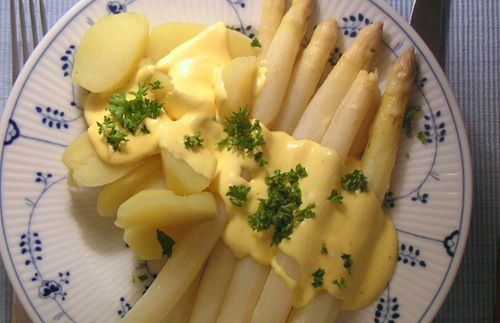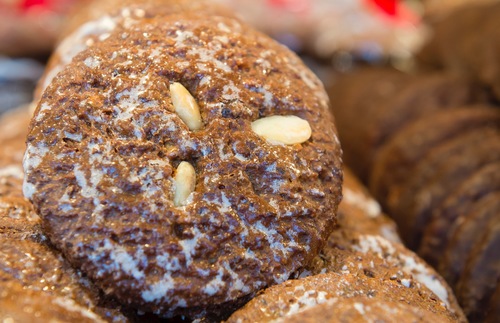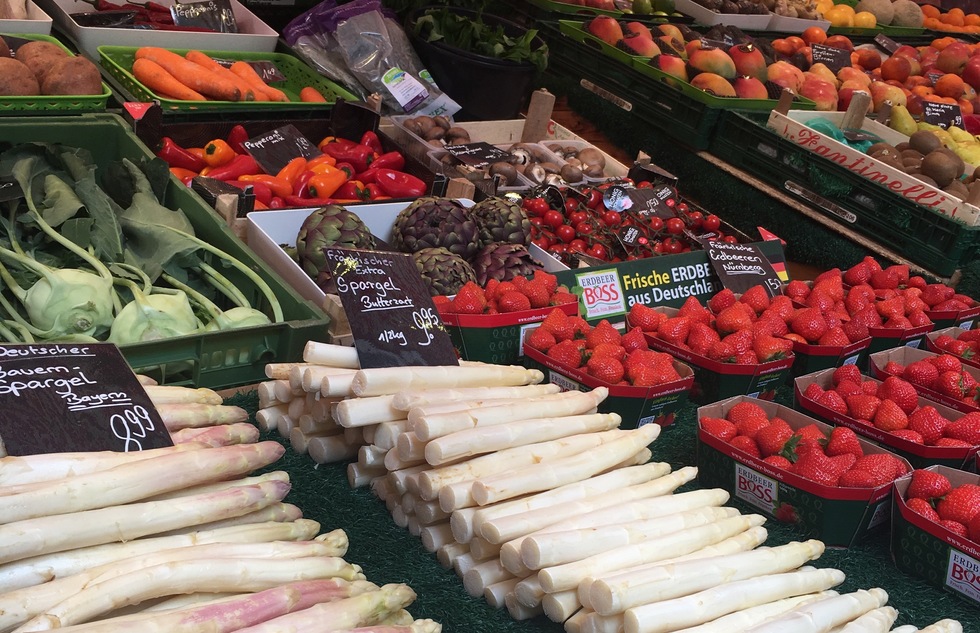One of the most genuine and enjoyable ways to experience a place is to try the food—especially those time-tested dishes that provide a true taste of the flavors and traditions of the region.
When you’re a vegetarian, though, that can be a tricky undertaking. A lot of meals associated with certain places around the world are heavy on the meat. I'm thinking of jamón ibérico in Spain and Portugal, Argentina’s beloved beef with a side of beef, or Iceland’s putrescent fermented shark (sorry, but why is that preferable to kale, exactly?).
Before a recent trip I took to the German region of Franconia in northwest Bavaria, I was a little concerned about going hungry because I don’t eat meat (including fish, which is not a plant, after all) and my preconceived culinary notion about Bavaria was that it’s a land of beer and bratwurst—basically, Wisconsin without the cheese. I knew that a modern country like Germany would have plenty of restaurants with vegetarian options, but as an inquisitive first-time visitor, I didn’t want to have to tuck into some sad little lukewarm wedge of tofu. I wanted to taste Germany.
I shouldn’t have worried. Whether you’ve got a hankering for something healthy, hearty, or sweet, there’s a lot more than sausages to choose from. And as for tasting Germany, let’s not forget that we vegetarians are in prime position to sample the actual products of the land—its fruits, vegetables, and grains. And speaking of grains, yes, I will have another stein of beer, thank you.
Now let’s take a look at what’s on the menu for a vegetarian in spots ranging from the rolling hills of Franconian Wine Country to historic cities such as Würzburg, Bayreuth, and Nuremberg.
PRODUCE: Unlike many U.S. supermarkets that stock the same fruits and vegetables year-round (mmm, those flavorless January apples!), Germans tend to stick to the seasons. So what you’ll taste depends on the time of year you visit. That means cherries and strawberries in summer, gourds and parsnips in the fall, and root vegetables in winter. Sauerkraut made with fermented cabbage and spongy potato dumplings resembling matzo balls are perennial staples, but the real star of the show is white asparagus.
More tender and less bitter than the green variety, these string-cheese lookalikes are so popular in Germany there’s even a name for the magical season (April to June) when they appear at farmers’ markets and in restaurant kitchens: Spargelzeit. The quintessential white asparagus preparation is boiled and smothered in hollandaise sauce, a nice balance of creamy and earthy that pairs well with sylvaner, the dry white wine cultivated in Franconia’s vineyards.

(Photo: Elya [CC BY-SA 3.0], via Wikimedia Commons)
BREADS AND SPREADS: A traditional meal in Franconia is often a nibbler’s feast involving platters heaped with sausages, bread, cheese, sauerkraut, and spreads. Bypassing the wurst, vegetarians can fill up on regional delicacies such as chewy Bavarian pretzels smeared with horseradish (a more authentic choice than mustard) or rye bread with obatzda, a tasty spread made with soft cheese, butter, and spices. I could eat it by the bowlful.
BEER YOU EAT: A stein isn’t the only beer-delivery system in Bavaria. The region’s distinctive brews—which can only feature water, hops, barley, and yeast, according to a “purity law” established in 1516 (though yeast was added later)—also show up in foodstuffs such as beer-battered cauliflower and, in Bamberg, a bread made with the town’s famous “smoked beer,” which gets its flavor from drying malt over a fire. (The taste is less overpowering in bread form.) And for the true aficionado of bitter beer ingredients, there’s hops salad, a local favorite that’s in season in March and April.
SWEETS: Last but definitely not least are Franconia’s desserts and sweet treats. Two with the most history and lore attached to them are the Knieküchle and Nuremberg gingerbread. The former is a disk of fried dough, and, honestly, what more needs to be said? The fluffy, sugar-dusted pastries have thin middles encircled by a thicker rim; supposedly, they got that way because in the old days, bakers would spread the dough on their knees so that they could read love letters through them while they worked. Sounds to me like a good way to end up with a deep-fried love letter.

(Photo: Nuremberg Convention and Tourist Office / Uwe Niklas)
Nuremberg gingerbread (pictured above) is much too soft and cakelike to use for building miniature houses at Christmastime. But, on the other hand, it doesn’t taste like drywall, either. Nuremberg’s confectioners took several centuries to perfect the recipe—the record of shops such as the 400-year-old Wicklein stretches back to the days when the city’s position along spice trading routes made it easy to acquire crucial cookie ingredients like honey, ginger, and cinnamon.
As with Bavarian beer, strict rules govern the making of Nuremberg gingerbread. For starters, it always has nuts and it’s always baked on a thin wafer of the sort used in Communion. Monks developed the recipe, and they had a ready supply of those. Slight variations are allowed, such as coating the cookie with dark chocolate or—my favorite—sprinkling it with powdered sugar.
Far from going hungry, in other words, a vegetarian in Bavaria is likely to gain a pound or two. As for you vegans, options are more limited—but you're used to that.
To help plan your own culinary program on the road, here's a handy calendar from the Irish Food Board showing when fruits and vegetables are in season in Western Europe.






